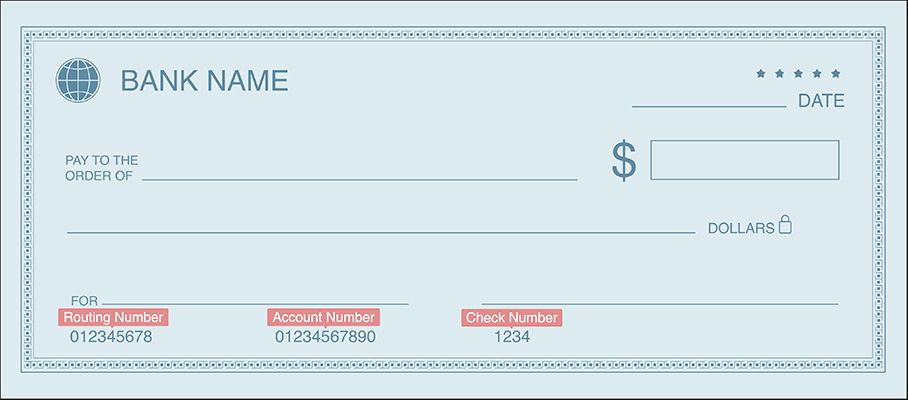In the age of digital transactions, it’s clear you need a bank account. If someone wants to send you money via Zelle or your employer or freelance gig only offers a direct deposit option, check-cashing services won’t meet that need.
But what if your past financial mistakes are holding you back? Maybe you’ve gone into overdraft once too often or forgotten to pay some fees.

Too many transgressions can land you in the ChexSystems database, which is like a credit bureau for banks. It tracks individuals’ banking histories, such as account overdrafts, bounced checks, unpaid balances, and fraud, to help banks assess the risk of opening new accounts.
Just like a low FICO score can make it harder to obtain a loan or credit card with a low interest rate, a listing in the ChexSystems database can hurt your chances at opening a traditional bank account.
That’s where a second chance bank account comes in. Read on to find out why this unique banking option could be your key to a brighter financial future.
Why Some People Can’t Open Standard Bank Accounts
A poor banking history makes it harder to open a bank account. If you’ve had multiple overdrafts, failed to pay banking fees, or committed fraudulent activity, you’re likely to have a negative record in the ChexSystems database. Financial institutions refer to this database before allowing you to open a checking or savings account. If you’re in it, chances are you’ll be denied a regular checking account.
What is a second chance bank account?
A second chance bank account provides an alternative for those who can’t open traditional checking accounts due to a spotty banking history. Unlike a standard checking account, a second chance checking account has more lenient requirements and forgives your past financial missteps.
In this way, it’s similar to a secured credit card, giving you the opportunity to prove that you can manage your money. A second chance bank account serves as a bridge to help you rebuild your financial credibility.
See also: Best Second Chance Checking Accounts of 2025
How do second chance bank accounts work?
Understanding the mechanics of a second chance bank account can help you use it to its fullest potential. So, how do these accounts work?
Basic Features
First, let’s talk about what you can expect in terms of basic banking services. You’ll usually receive a debit card, which you can use for purchases and ATM withdrawals. You’ll also have access to online and mobile banking, enabling you to manage your account, check balances, and make transfers anytime, anywhere. Some accounts even offer direct deposit as a feature.
Restrictions and Limitations
While second chance bank accounts aim to provide access to essential financial services, they come with certain restrictions designed to limit the risk for financial institutions. These can include:
- Monthly fees: Unlike many regular checking accounts, which might offer ways to waive monthly fees, you’ll typically have to pay a set fee each month for a second chance account.
- No overdraft protection: To prevent further damaging your banking history, most second chance bank accounts don’t offer overdraft protection. If you attempt to spend more than what’s in your account, the bank will likely decline the transaction.
- Transaction limits: There might be a daily or monthly limit on how much money you can withdraw or deposit.
- No check writing: Some second chance accounts do not include check-writing privileges, so you’ll need to use your debit card, cash, or money orders for payments.
Rebuilding Your Banking History
Fortunately, second chance bank accounts exist to help you build or rebuild a positive banking history. By making regular deposits, avoiding overdraft fees, and meeting minimum balance requirements, you send a message to the financial institution that you’ve learned from past mistakes and can manage an account responsibly.
The Path to Upgrading
Many financial institutions monitor the activity of second chance accounts and offer the opportunity to upgrade to a standard checking account after a period of responsible usage.
While second chance bank accounts have limitations, they can help you get your finances back on track, allowing you to eventually transition to a regular checking account with greater financial freedom.
Comparing Second Chance Bank Accounts
When it comes to selecting the optimal second chance bank account to fit your needs, there are several key factors to weigh. Each bank or credit union will have its unique set of features, limitations, and fees. Here’s what to consider:
- Monthly fees: Monthly fees can accumulate, and they differ among financial institutions. Some might offer more services for a slightly elevated fee. You’ll want to find an account you can afford that provides the services you want.
- Location and ATM access: If in-person banking matters to you, you’ll want to make sure the financial institution has branches in your area. Also, check on ATM accessibility — the number of available ATMs and any associated fees can vary.
- Online features: Though online and mobile banking have become standard, the quality of these platforms can vary. Look for accounts that provide a comprehensive online system and mobile app. Functions like mobile check deposit, online bill payment, and real-time account notifications make financial management easier.
- Customer reviews: Gaining insight from existing or former customers can be invaluable. Look for reviews that discuss the second chance bank accounts offered by the financial institution, focusing on aspects like customer service, fee transparency, and user experience.
- Additional Features: Certain second chance bank accounts offer added advantages such as direct deposit, potentially allowing you to bypass monthly fees. When comparing accounts, keep an eye out for these extra features and other benefits like cash back rewards or integrated budgeting tools.
How to Open a Second Chance Bank Account
Once you’ve chosen your bank or credit union, it’s time to open an account. Though the process is straightforward, but it’s essential to come prepared, whether you’re opening the account online or in a local branch. Here’s what you’ll need to do:
Gather Your Documents
Before you even begin the application process, gather some critical documents. Typically, you’ll need the following:
- Government-issued ID: This could be a driver’s license, passport, or state-issued ID. This document serves to confirm your identity.
- Proof of address: A utility bill, rental agreement, or even a bank statement can often serve as proof of your current residence.
- Social Security number: Your Social Security number is used for identification and tax reporting purposes. Make sure you have your Social Security card or a document that includes your number.
- Additional documentation for non-U.S. citizens: If you’re not a U.S. citizen, you’ll likely need to provide additional documentation, such as a visa, resident alien card, or foreign passport.
The Application Process
Once you have all your documents in order, it’s time to apply, either online or in a branch:
- Online: Many banks and credit unions offer an online application process. This is convenient and quick, often allowing you to complete everything in one sitting.
- In-person: If you prefer a more traditional route or need additional assistance, visiting a branch is also an option. You’ll get the chance to speak with a representative who can guide you through the process and answer any questions.
Initial Deposit and Minimum Balance Requirements
Keep in mind, to open an account, you may need to make a minimum opening deposit. Be aware of any minimum balance requirements, as well.
- Minimum opening deposit: Many second chance bank accounts require a minimum opening deposit. This amount varies from one financial institution to another, but is usually around $25 to $100. Make sure you can meet this requirement when you open your account.
- Minimum balance: Some accounts also have minimum balance requirements to keep the account active. It’s crucial to be aware of these, so you don’t incur additional charges.
Upgrading to a Standard Account
After you’ve responsibly managed your second chance bank account for a certain amount of time—usually ranging from 6 to 12 months—you may become eligible to upgrade to a standard checking account. This transition is more than just a banking change; it’s a key milestone on your road to financial recovery and freedom. Here’s why upgrading matters and how you can take this important step.
Why Upgrade?
Transitioning to a standard checking account comes with numerous advantages that can make managing your finances easier and more cost-effective. Here are some compelling reasons to consider the switch:
- Fewer restrictions: Standard checking accounts often have fewer limitations than their second chance counterparts. This could mean more flexibility with transaction limits, check-writing capabilities, and sometimes even access to additional banking services like loans or credit cards.
- Lower fees: The burden of monthly fees can add up over time, eating into your hard-earned money. Regular checking accounts often have lower monthly fees and may even provide ways to waive those fees altogether, such as by maintaining a certain balance or setting up recurring direct deposits.
- Enhanced features: Standard accounts frequently come with more robust features, including advanced online and mobile banking options, wider ATM networks, and even rewards programs or interest on your checking balance.
- Improved financial standing: Successfully upgrading sends a positive signal not just to your current financial institution but also to other potential lenders and service providers. It’s a mark on your financial record that shows you’ve successfully managed your account and are less of a risk.
How to Upgrade
While eligibility criteria can differ between banks and credit unions, there are some general steps to prepare for the upgrade:
- Review your account: Before approaching your financial institution about an upgrade, take stock of your account. Have you met all minimum balance requirements and avoided overdraft fees? A positive track record will make a compelling case for your upgrade.
- Consult customer service: Speak with a customer service representative or a banking advisor to discuss your eligibility and any additional requirements. They can guide you through the steps and paperwork that may be involved.
- Complete any necessary paperwork: In some cases, you might need to fill out a form or complete additional documentation to finalize the upgrade. Be sure to complete these steps as required.
- Confirm the change: Once everything has been processed, you’ll receive confirmation that your account has been upgraded. This is usually accompanied by information about your new account features, terms, and conditions.
Bottom Line
Having a bank account is more than a convenience—it’s a necessity for accessing basic banking services and improving your financial standing. A second chance bank account serves as a lifeline for those unable to open standard checking accounts. While they come with limitations and often charge monthly fees, they offer an invaluable opportunity for rebuilding your banking history.
Taking control of your personal finance starts with taking steps like opening a second chance account, which can eventually pave the way for you to transition to a regular checking account. Don’t let past mistakes hold you back; take the first step toward reclaiming your financial freedom today.




